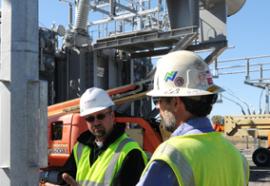Transmission's True Value
Adding up the benefits of infrastructure investments.
Allocating the costs of new transmission investments requires accurately assessing the value of those new lines, and identifying the primary beneficiaries. But formulaic approaches rely too much on the most easily quantified cost savings, and reject benefits that are dispersed across service areas—or that might change over the course of time. Brattle Group analysts J.P. Pfeifenberger and D. Hou explain that comprehensive valuation produces a more accurate picture.










